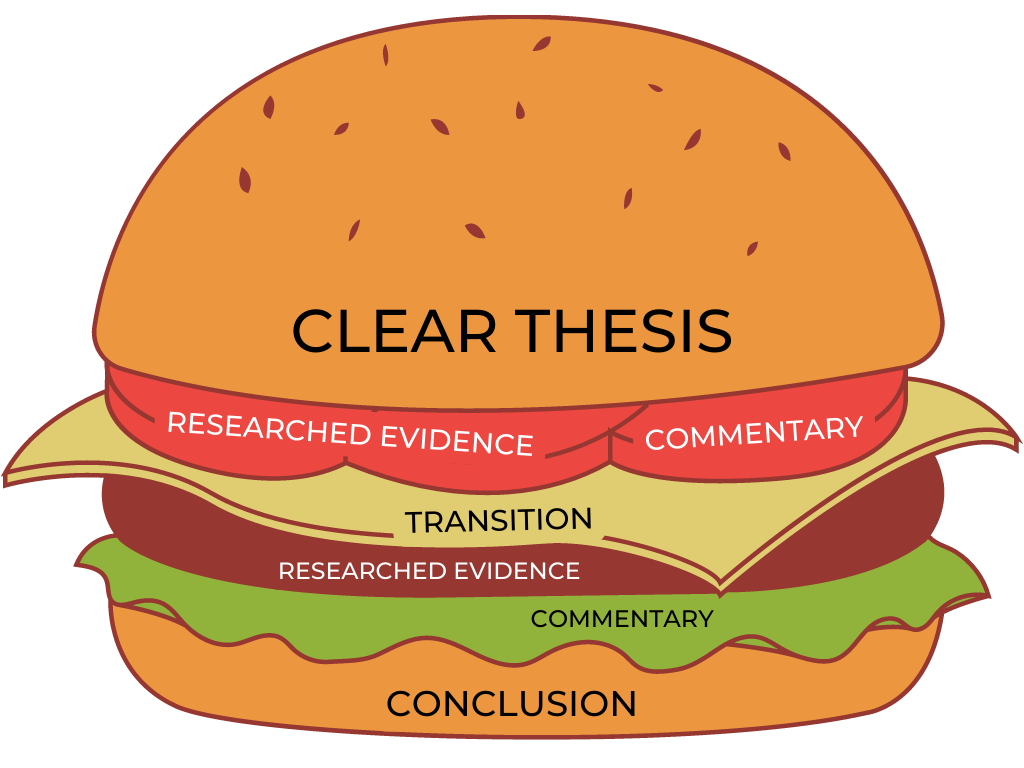36 Wrapping Up
Remember that an effective argument hinges on a solid thesis statement. A well-written argument establishes a clear stance on a particular issue and defends that stance by citing relevant evidence and explaining how that evidence supports the thesis/claim. Both Toulmin and Rogers recommend acknowledging counterarguments and then rebutting those counterarguments so as to strengthen the claim, establish the author’s ethos, and connect with the audience. More specifically, readers want to see that you are knowledgeable on the issue, that you have thoughtfully considered various perspectives, and that you have critically established your stance. Combined, all of these aspects lend to Bitzer’s rhetorical situation, the combination of problem, audience, and constraints. In a sense, argumentation entails building layers within the essay, much like the hamburger illustration below: having a solid thesis statement (top bun), relevant evidence and thorough explanation of that evidence (meat), which ties back to the thesis, transition words and phrases between the layers of evidence and commentary (lettuce, tomato, cheese) and a conclusion (bottom bun).

The good news about argument is that there is no one “correct” answer. One semester, you can argue for one stance on a topic in one course, and then the next semester argue for a completely different stance on the same topic. Readers, especially instructors, mainly want to see your ideas and reasoning more so than which stance you take. Advanced writers can defend multiple points of view by recognizing the necessary evidence to defend each stance. Knowing what evidence the opponent uses only strengthens your ability to support your own argument.
Further Reading:
Argument:
The (In)Credible Argument: Crafting and Analyzing Arguments in College, CC BY-NC-SA 4.0
Argument and Critical Thinking, CC BY 4.0
Writing Persuasive Sentences:
